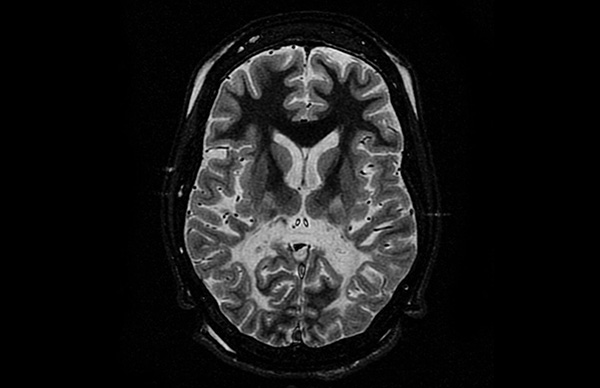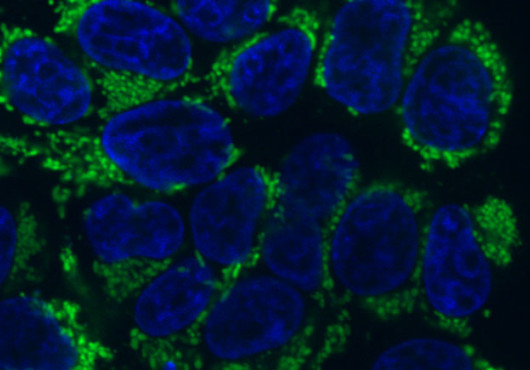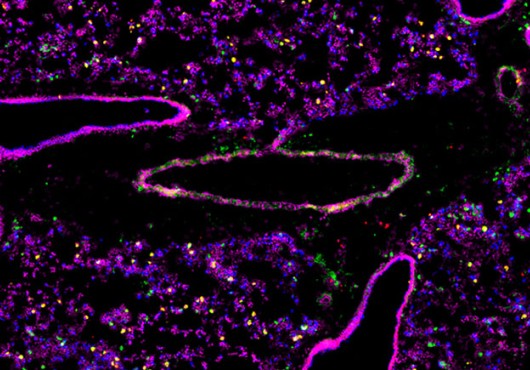
In a recent clinical trial, a gene therapy to treat cerebral adrenoleukodystrophy (CALD)—a neurodegenerative disease that typically claims young boys’ lives within 10 years of diagnosis—effectively stabilized the disease’s progression in 88 percent of patients, reported an international team led by Harvard Medical School researchers from the Dana-Farber/Boston Children’s Cancer and Blood Disorders Center and Massachusetts General Hospital.
According to the results, published Oct. 4 in the New England Journal of Medicine, 15 of 17 patients had stable neurologic functioning more than two years on average after receiving the gene therapy, which was administered in a clinical trial sponsored by bluebird bio. It is one of the largest gene therapy trials targeting a single-gene disease to be published to date.
“Although we need to continue to follow the patients to determine the long-term outcome of the gene therapy, so far it has effectively arrested the progress of cerebral adrenoleukodystrophy in these young boys,” said David A. Williams, chief scientific officer and senior vice-president for research at Boston Children’s Hospital, president of Dana-Farber/Boston Children’s Cancer and Blood Disorders Center and the lead author of the study. “This is a devastating disease, and we are all quite grateful that the patients and their families chose to participate in the trial.”
The treatment uses bluebird bio’s proprietary Lenti-D gene therapy to deliver the functional gene to patients’ stem cells in the laboratory. Bluebird bio is engaged in ongoing discussions with the FDA and European regulators on their plans to bring the therapy to market.
“This treatment results from more than two decades of investment in basic gene therapy research by the NIH and others,” said Williams, who is also the Leland Fikes Professor of Pediatrics at HMS. “It really demonstrates that research funding is essential to developing the next generation of therapies for devastating childhood diseases.”
“Since it was first described 100 years ago, adrenoleukodystrophy has robbed the function of children who, up until the disease’s onset, had been developing normally,” said co-lead author Florian Eichler, associate professor of neurology at HMS and director of the Leukodystrophy Service at Mass General. “These are children who have been growing and thriving, and then suddenly, their parents witness this devastating decline that starts with personality changes and then progresses to motor problems and loss of their ability to walk and talk.”
New avenue for treatment
Adrenoleukodystrophy, featured in the 1992 movie “Lorenzo’s Oil,” is an X-linked genetic disease that usually affects boys. It causes a buildup of fatty acids that damage the myelin sheaths of nerves and also results in adrenal insufficiency.
The most devastating form of the disease is CALD, marked by demyelination and inflammation in the patients’ brains.
Until now, stem cell transplantation using cells donated by another person has been the only known effective therapy for CALD. Yet its efficacy is drastically reduced if performed during later stages of neurodegeneration, and it usually works best with a disease-free matched sibling donor, which fewer than one-quarter of CALD patients have.
To perform the gene therapy, clinicians first collect a patient’s blood stem cells, which give rise to all mature blood cells. In a highly specialized laboratory that contains a clean room for preparation of medicines, a viral vector is used to insert a correct version of the faulty gene into the patient’s stem cells. Then, after the patient receives chemotherapy to make room for the genetically altered blood stem cells in the bone marrow, the cells are infused back into the patient’s bloodstream via an intravenous line.
“In my clinic, the impact of this trial has been phenomenal,” Eichler said. “Boys without a donor match for stem-cell transplant were often passing away within a year or two of their diagnosis. Now, with early diagnosis and gene therapy, these boys are living longer, and some are thriving enough to play sports and participate in other normal day-to-day activities.”
The story continues
At the latest follow-up, all patients who participated in the clinical trial were making functional ALD protein, which their bodies had been unable to produce prior to gene therapy.
The trial is ongoing and has received regulatory approval to expand patient numbers.
“There are two great advantages to gene therapy,” Williams said. “The first is that patients don’t have to wait to find a donor match. The second is that, because we use their own, gene-modified stem cells, there’s no risk of graft-versus-host-disease and the patients do not require any immunosuppression drugs, which can have very significant, even fatal, side effects.”
“We are excited to provide this cutting-edge therapy to patients afflicted with cerebral adrenoleukodystrophy and other life-threatening diseases,” said co-lead author Christine Duncan, assistant professor of pediatrics at HMS and a pediatric hematologist/oncologist at the Dana-Farber/Boston Children’s Cancer and Blood Disorders Center. “The work is the result of robust collaboration and years of work by teams dedicated to improving the lives of children.”
In addition to bluebird bio, the work was supported by Harvard Catalyst | The Harvard Clinical and Translational Science Center (National Center for Research Resources and the National Center for Advancing Translational Sciences, National Institutes of Health Award UL1 TR001102), as well as Great Ormond Street Hospital and University College London Great Ormond Street Institute of Child Health Biomedical Research Centre and a PCORI Patient Powered Research Network award.
Adapted from a Dana-Farber/Boston Children’s news release.





